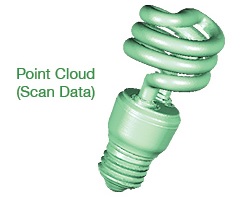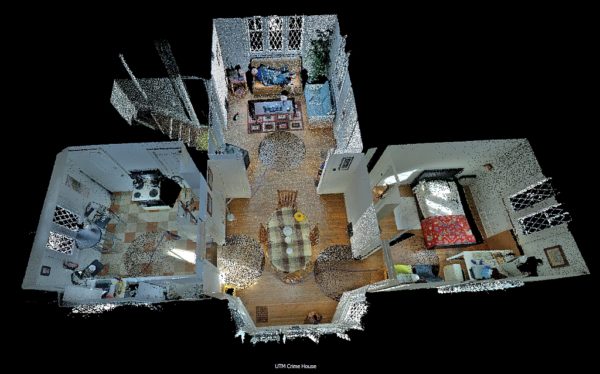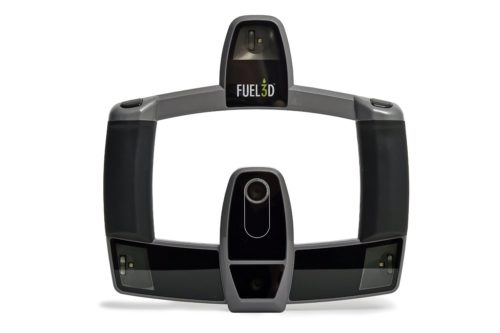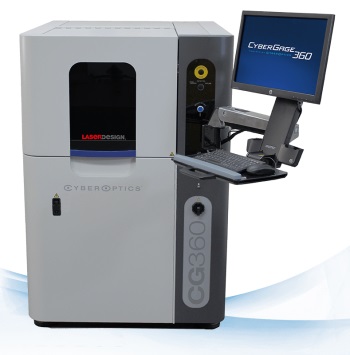
Introduction
The 3D scanning is a very advanced technique in which real objects are scanned in some way to get the three-dimensional models in digital format for subsequent use on other applications, that can be modeling, printing 3D structural studies, etc .. At present, 3D Laser Scanning is the technique that provides better results
3D Laser Scanning
This technique makes use of very advanced instrumentation that makes use of the laser for reading the three-dimensional objects, called 3D Laser Scanning. This technology is excellent because it is non-destructive and does not require any contact with the object. The outer surface of the object is read digitally using a laser beam that creates a point cloud, that is, a series of points corresponding to the spatial coordinates that correspond to the object surface.
Over the years this technique has been gradually improving, and currently has achieved a truly amazing level of detail. In fact, this technique is able to read complex-shaped objects with special internal involutions without losing interior details, objects with forms of traditional measure would be really impractical to measure.
The 3D laser scanning process
The object to be scanned is placed on the digitizer. Specialized software submits the entire surface of the object to the laser probe (probe laser) which intercepts all the points. This laser probe projects a laser beam on the object surface while two cameras serve as sensors, recording the variations of distance and shape of the laser along the three dimensions X, Y and Z, each time a point cloud is to be read.
At the end of the process you will get a cloud of points which will go on to describe the object’s shape. Despite the great level of detail, currently iI process is very fast, up to 750,000 points per second at a level of precision of 0.005 “.
I chose to use the image above (taken from the site Blog Ponoko) because it represents well the various processes described above.
The cloud point must then be processed further in a way that the interpolated points will define the surface of the object subjected to scanning. At this point we will have directly a 3D model that can be used for other applications, such as 3D printing.
3D Scanning Applications
Generally, the first thing you think when you hear of 3D scanning or digitization is the scanning of an object placed on a plate, and then digitized by reading point by point its surface marked by a laser beam. All the process is carried out on a table or in a machine, however, as part of a workshop or laboratory. But the scenario is not always this way.
In fact one of the 3D scanning applications regards the real world. Some 3D scanners have been mounted on vehicles. These scanners have been properly designed to detect and digitize the surrounding reality. You will surely have seen a car of Google Maps that goes around taking pictures along the roads. Well, there are also cars that do not take pictures, but rather capture the world around them to create an appropriate digitized 3D reality.
This technique is called LIDAR (Light Detection and Ranging) and currently its practical applications are in the field of video games and movies (post-production), but nothing leads us to believe that it will limit itself to this.
Another application, very similar to the previous one, is that forensic (AI2-3D). In this case, the 3D scanner is mounted on a tripod and used within a room, to “photograph” the crime scene, so you can then perform analysis on particular that in the time of analysis were not detected by scientific.
Another practical application when scanning the surrounding reality can be very useful is the field of archeology (see here). In fact, in a manner similar to the forensic material, it is very important to take a 3D “snapshot” of a location of an archaeological site, in order to have also an analysis of the site long after other layers of soil have been removed.
Un’altra applicazione pratica in cui la scannerizzazione della realtà circostante può essere molto utile è nell’ambito dell’archeologia . Infatti in maniera simile alla materia forense, è molto importante scattare un “fotografia” tridimensionale nel luogo di un ritrovamento archeologico, in modo da poter avere un’analisi del sito anche parecchio tempo dopo che altri strati di terreno siano stati asportati.
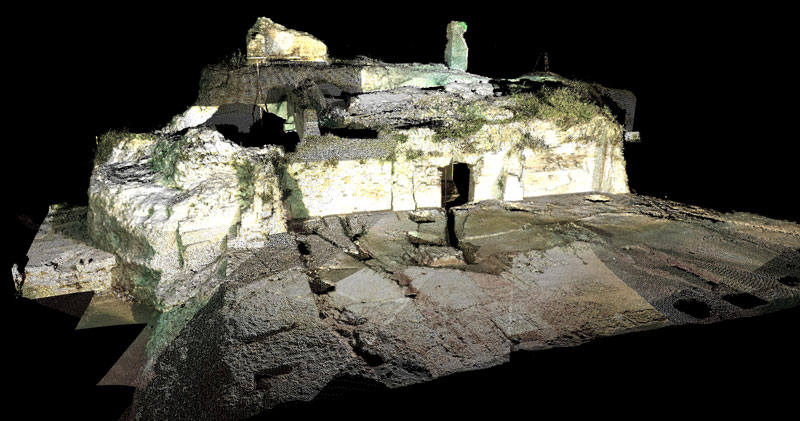
Industrial Applications
Returning to the applications that you’re more accustomed ie industrial scans performed in a laboratory or workshop, you can divide them into three major groups:
- Quality Inspection
- Reverse Engineering
- Analysis
The Quality Inspection generally consists in individual analysis of the various components, which compose a more complex system. Generally in the industry, during the production and the assembly of a product, there are some standard procedures and regularized that characterize the quality of production standards. Using the 3D scanning, proper analysis can be the tool you need to ensure these standards.
Finally, the 3D scanning can be a very useful technique as regards the procedures for the industrial Analysis to understand and monitor the behavior of the components which compose the system. Analysis including digital simulation, finite element analysis and computational fluid dynamics.
Reverse Engineering is the engineering technique to better study the inner workings of mechanical assemblies, thanks to 3D scanning. This to better control the various stages of design and improve the functioning and the effectiveness of a product.
3D Digitazers
At present, the 3D scanning is a well established practice and there are many products available on the market, both professionally and as a hobby. Many 3D digitizers have truly reached an affordable price and therefore are easily purchased in supermarkets.
For example digitizers of Makerbot and 3D Fuel have a very affordable price. They are very lightweight, practical and can be easily transported, thus also suitable for the fairs! Products are indeed suitable for those who want to challenge themselves with this technique, for semi-professional use (Makers, fans, small professional) or even for classroom use.
For fans of the world of iPhones and iPads, Apple has created iSense. An extension for direct integration on iPhones and iPads to turn them into 3D digitizers. Is not it fantastic?
On the other hand, with regard to professional digitizers, the price range is much higher and even become quite large in size, so that they are to be considered as laboratory instrumentation. The technology is much more advanced and the results that can be obtained with this kind of equipment is very high.
Finally there are very functional models of 3D printers that include within them a 3D scanner, and then with a single tool, you can do two different operations: the 3D scanning and its subsequent printing. One of these models is the Da Vinci, a 3D printer that besides being small, practical and simple to use, it’s reasonably priced and easily accessible to all.
Conclusions
This article an overview on the subject of 3D scanning was briefly discussed. You have seen how this technique is becoming increasingly popular in many areas, both professional and industrial. However, thanks to the spread of 3D scanning instrumentation, some models can be accessible to a wider audience, bringing the possibility of applying this technique to Makers and various enthusiasts, such as the model.[:]
